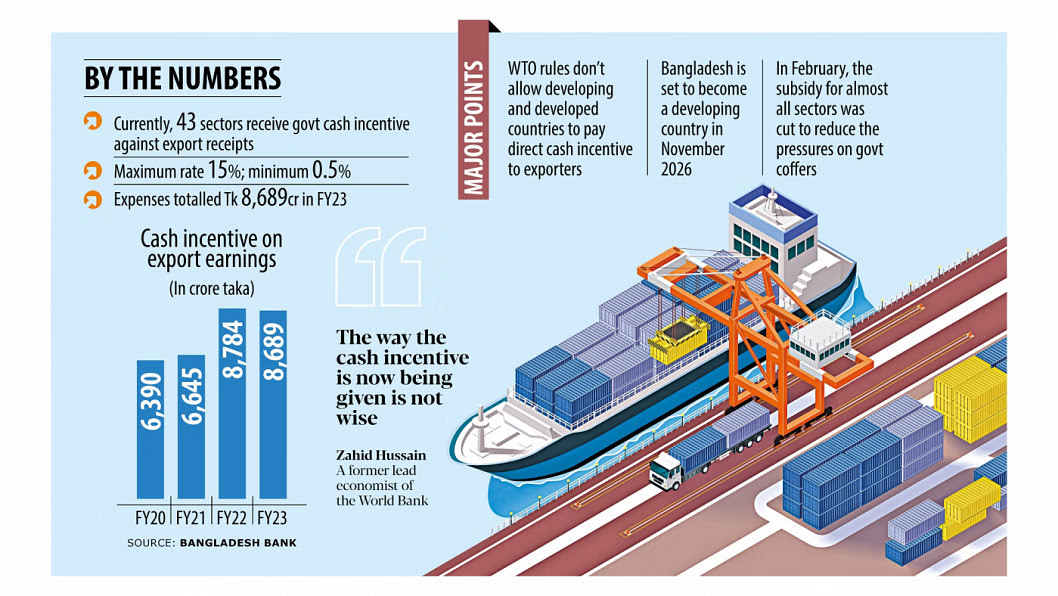Major industrial sectors are suffering from a sluggishness as factory production slowed down to a great extent in the July-August period of 2019-20 thanks to a fall in shipments. Factory production saw a 2.2 percent year-on-year rise in the July-August period this year which was as high as 14.6 percent in the same period the previous year, according to the Bangladesh Bureau of Statistics (BBS). A fall in exports has mainly slowed the growth, said MA Jabbar, managing director of DBL Group, one of the leading apparel manufacturers and exporters. The main industrial sector of apparel—where around 4.4 million people work—has been suffering from a downturn in exports for the last couple of months. In July-August of 2019-20, garment production declined 0.58 percent year-on-year to Tk 235 billion when knitwear manufacturing grew only at 0.65 percent, much lower from 5.42 percent in the previous year, according to the Quantum Index of Industrial Production (QIIP) by the BBS. Jabbar said many factories got shut due to their failure to remain compliant when a number of small factories lost competitiveness. Apart from apparels, production of cotton yarn, pharmaceuticals, rod and cement also dropped along with leather and leather goods. Rod production edged up only 0.43 percent year-on-year to 67,090 tonnes, whereas the growth was 5.47 percent in the same period last fiscal year. Cement output grew only at 2.28 percent in July-August this fiscal, which was 8.45 percent in the same period the previous year. “Domestic market did not grow as we expected in the initial months,” said Md Alamgir Kabir, chairman of GPH Ispat, one of the main steel makers of the country. “Public construction works had been quite stagnant during the period while private industrialisation activities did not pick up.” “We see the possibility of a rise in demand for construction materials as Bangladesh Bank has recently capped interest rate for industrial loans to single digits,” said Kabir, also president of Bangladesh Cement Manufacturers Association. SM Shafiuzzaman, secretary general of the Bangladesh Association of Pharmaceutical Industries, has blamed the fall in pharmaceuticals production on the slow shipment of drugs overseas. “However, the domestic market has been good and it grew during the period.” As per the BBS data, manufacturing growth accelerated on par with the economy over the past couple of years, said Towfiqul Islam Khan, senior research fellow of the CPD. The slowdown in industrial production is likely to affect other sectors leading to a slowdown in overall economic growth and thus affecting domestic demand and job creation for the growing workforce, he said. Industry accounts for one third of the gross domestic product recorded in 2018-19 and the growth of the services sector depends a lot on the industrial sector, said Zahid Hussain, former lead economist of the World Bank. “Transport, wholesale, retail trade will not expand unless production increases. So it has a chain effect.” The irony is that manufacturing had the highest growth last fiscal year and it was the major growth driver on the supply side, he said. Export declines can explain only part of this year’s slowdown, he said adding that a significant part of the deceleration remains unclear. “We need to dig deeper to get a satisfactory explanation.”
RMG BANGLADESH NEWS
A Knowledge-based Initiative of Best Sourcing
Ready Made Garments sector is the key source of foreign currency and GDP for Bangladesh. Approximately 4.2 million people are dependent on the RMG sector for their bread and butter.
Ready Made Garments sector is the key source of foreign currency and GDP for Bangladesh. Approximately 4.2 million people are dependent on the RMG sector for their bread and butter.
Contact us: info@rmgcentre.com
© Copyright 2019 - RMG Bangladesh
















